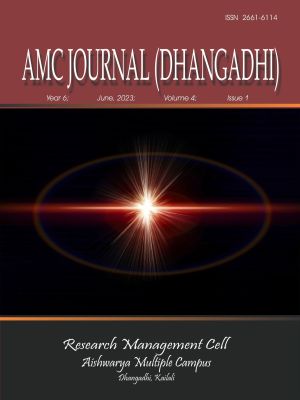Mathematical Modeling of Communicable Diseases with Yoga as Control Strategy
DOI:
https://doi.org/10.3126/amcjd.v4i1.58833Keywords:
Transmission dynamics, Pranayama, Immunity power, Epidemic equilibriumAbstract
The purpose of this paper is to formulate and analyze the abstract behavior of diseases dynamics. The formulation of the problem in the paper is inspired by ethnographies from different social setting and ancient cultural practices related to human health problems. Many people have been worried for communicable diseases caused by virus due to their complexities and dearth of knowledge. They have been a major cause of morbidity and mortality among humans all over the world. Yoga Sadhak compartment (Y) is added to SIR model. A new SYIR model is developed which contains four governing differential equations to describe the transmission dynamics of these disease. These equations were analyzed. Effectiveness and efficiency of yoga pranayama is calculated. Reproduction number is estimated and sensitivity analysis of parameters used in the model is studied. A distinction is made between infection in naïve susceptible and Yoga Sadhak susceptible individuals. Using the model, association between prevalence of infection and immunity by Yoga Pranayama is analyzed. It is found that Yoga Pranayama induce immunity power in individuals which help to reduce transmission rate of diseases. The model shows that eradication depends on Yoga Pranayama coverage as well as on yoga Pranayama efficacy. This study definitely answers the questions regarding the effectiveness of Yoga Pranayama. Further studies are needed to formulate the model and establish causal relationship between parameters involved in the model.




